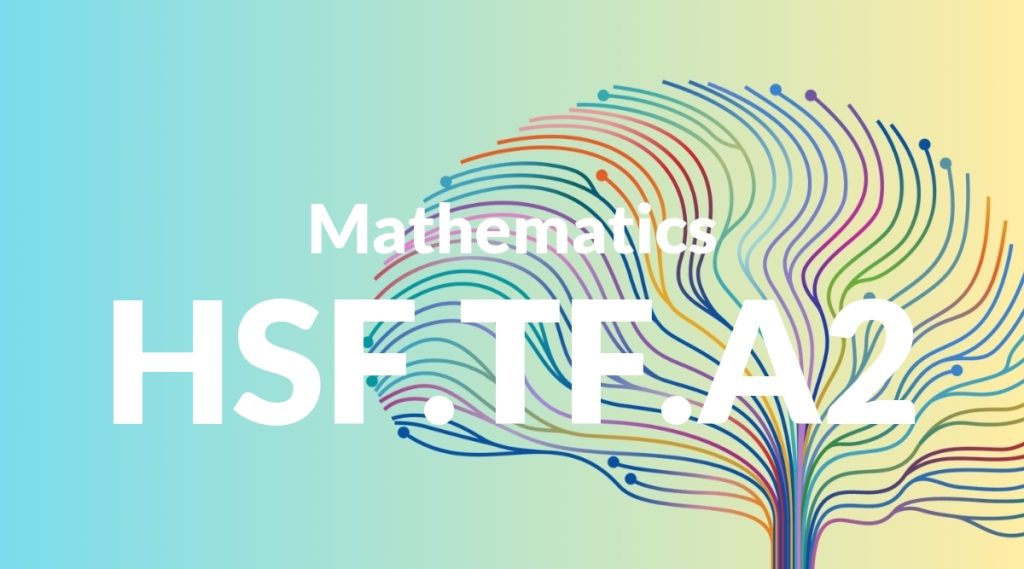Standard: HSF.TF.A2 – Explain how the unit circle in the coordinate plane enables the extension of trigonometric functions to all real numbers, interpreted as radian measures of angles traversed counterclockwise around the unit circle.
Grade level: High School: Functions
Subject: Mathematics
Domain: Trigonometric Functions
Teacher Overview
This standard focuses on extending the understanding of trigonometric functions using the unit circle. It is crucial as it lays the foundation for analyzing trigonometric functions beyond the first quadrant, thus enabling the application of these functions to real-world problems. Students need to be comfortable with basic trigonometric functions, the Pythagorean theorem, and the coordinate plane before tackling this standard.
Mastering this standard will prepare students to solve more complex trigonometric equations, analyze trigonometric identities, and apply these concepts to real-world problems involving periodic functions.
Common Misconception 1
A common misconception is that trigonometric functions are only defined for angles between 0 and 360 degrees. This is incorrect because trigonometric functions can be extended to all real numbers using the unit circle.
Intervention 1
Use visual aids and interactive unit circle diagrams to show how angles can be extended beyond 360 degrees and into negative values. This helps students visualize the continuous nature of trigonometric functions.
Common Misconception 2
Another misconception is that the unit circle only applies to degrees and not radians. This is incorrect as radians are a natural measure for angles in the unit circle.
Intervention 2
Provide practice converting between degrees and radians and emphasize the use of radians in the unit circle context. This will help students understand the broader application of trigonometric functions.
Prerequisite Knowledge
Students should have a solid understanding of basic trigonometric functions (sine, cosine, tangent), the Pythagorean theorem, and familiarity with the coordinate plane.
Subsequent Knowledge
After mastering this standard, students will be able to solve more complex trigonometric equations, analyze trigonometric identities, and apply these concepts to real-world problems involving periodic functions.
Instructional Activities
- Interactive unit circle diagram exploration
- Converting angles between degrees and radians exercises
- Real-world application projects involving periodic phenomena
- Group activities solving trigonometric equations using the unit circle
- Visualization and graphing of trigonometric functions




